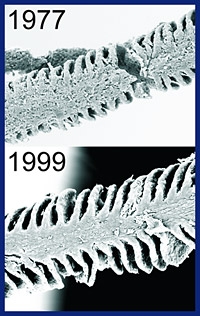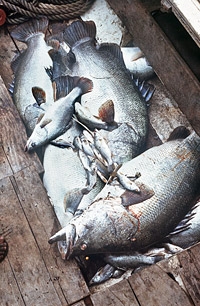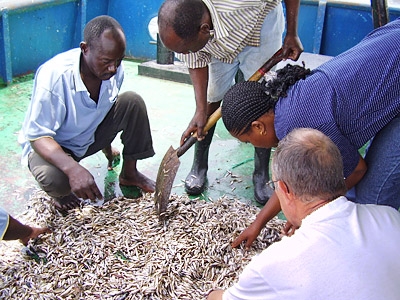
Super-fast evolution
Certain cichlid fish in Lake Victoria seem to have adapted super-fast to changing circumstances. Dr Frans Witte from the Integrative Zoology section has been awarded an NWO subsidy (approx. € 240,000) to carry out PhD research into the rapid changes apparent in this fish species.

Super-fast evolution
The cichlid fish in the lakes of East Africa are a classic example of rapid evolution and extreme adaptation, In Lake Victoria, more than 100,000 to 400,000 species of cichlids have evolved and probably even in a much shorter period, because there are indications that 14,600 years ago the lake was completely dry.
Nile perch
Diversity of species

As a result, the number of cichlids reduced dramatically and the diversity of species diminished, from more than 500 species to just 250. Intensive fishing in the 1990s meant that the Nile perch population again fell and some cichlid species recovered. Species which lived in shallow water close to the banks of Lake Victoria, where the Nile perch was not found, managed to survive, while the majority of the species that lived in open water lost the battle to the Nile perch. A few species recovered, however, and even flourished.
Adaptation

Collection
Witte has a unique collection at his disposal: Naturalis has a collection of more than 120,000 chichlids, collected by Leiden biologists over the past thirty years in Lake Victoria. Witte and Dr Martien van Oijen, curator/researcher at Naturalis, started their research on cichlids in 1977 in Tanzania. This research is still continuing today, giving Naturalis an extensive series of fish specimens from the Lake, spread over a long period of time.
Natural selection
Detailed research on six types of fish is expected to reveal whether the morphological changes took place gradually or more suddenly, and whether it is indeed a question of adapting to environmental changes. Data on this has also been collected over the past thirty years. Witte wants to investigate whether it really is a case of evolution as a result of natural selection, or of adaptation by individual fish. In the first case the adaption should be visible as a change in DNA.

Factors
The research should also give an insight into the factors that are decisive in adaptation. Biologists are currently debating the question of whether the changes in the cichlid population are caused by the introduction of the Nile perch, or by other factors, such as climate change or eutrophication, that is the greater diversity of food in the waters of the lake. This last is the consequence of settlements and fertilisation around the lake, resulting in the growth of algae and the consequent reduction in oxygen concentration.
The almost yearly series of specimens makes it possible to track the process of adaptation over time. It is possible to establish what change took place first, which can indicate the importance of a particular factor. When the first changes in the gills appeared is an indication of changes in oxygen concentration. A reduction in head size is more likely to indicate the Nile perch as fish threatened by predators, as such prey often develop a more streamlined head to make it easier to escape their enemies.
A conclusion on the importance of different factors is again relevant for similar lakes, such as Lake Malawi. No exotic species are expanding there, but there is evidence of eutrophication and climate change. The question is whether this could in time lead to the extinction of particular species.
